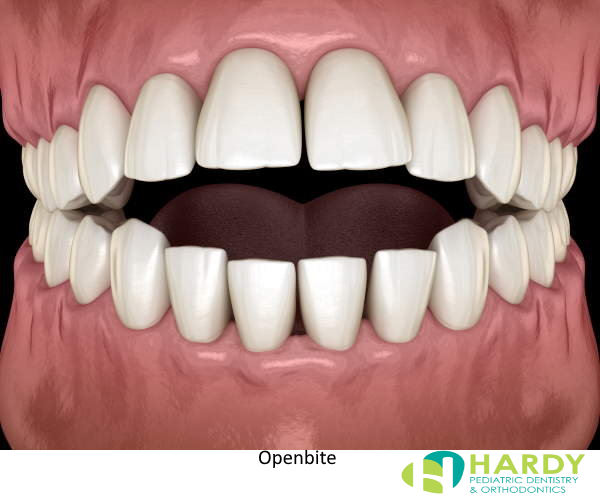Those who have an open bite have front upper and lower teeth that slant outward and don’t contact when the mouth is closed. Bite: It might be hard, or even impossible, to completely chew some foods because of this bite
What Is Open Bite? | What Causes Open Bites? | Types of Openbites | What issues does Openbite cause? | Treatment for Over Bite Teeth
What is Open Bite?
 The upper and lower parts of an open bite don’t come together when the mouth is closed. When the person closes his or her mouth, there is a space between the rows of it. An open bite can make it hard to speak and make a person smile less happy.
The upper and lower parts of an open bite don’t come together when the mouth is closed. When the person closes his or her mouth, there is a space between the rows of it. An open bite can make it hard to speak and make a person smile less happy.
What Causes Open Bites?
People sometimes have an open bite because of a problem with their jaw bone. Children often have this problem when they have both primary and permanent teeth in their mouths at the same time. The primary teeth won’t be able to fit together until all of the first teeth fall out. This is why there is a malocclusion in the teeth. Open bite solution using clear braces is good treatment option.
Habits can also play a condition in this. Tongue thrusting can cause you with an open bite because you push your tongue through it when you eat or speak, leaving you with an open bite. In childhood, most children get over the tongue of thrusting their tongues. In the event that they don’t, they can have problems with their speech and bite.
Chewing on foreign objects or sucking your thumb are two other habits that can make this happen, as well. A baby bottle or pacifier that isn’t used in the right condition can make this worse. Open bite correction with hidden braces are an ideal treatment option for adults who want to correct it. Learn more about can invisalign treat open bite?
Types of Open Bite Malocclusion
People eat open bites in many different types. Most of these are:
Anterior Open Bite
People have this problem when their front teeth don’t line up on a full bite. It usually affects all of the front teeth, but sometimes just a few of them, and it can be hard to tell. Treatment is usually needed to get back to full tearing and biting abilities.
Posterior Open Bite
These are two different types of open bites: one is when the front teeth don’t touch, and the other one is when they do. Because of the way that the patient bites down, the back teeth don’t come together. Treatment is usually needed to get the premolars and molars back to being able to chew again.
Dental Open Bite
The jawbone and gums get in the way when a tooth doesn’t come out the way it should.
Skeletal Open Bite
This type is usually caused by a genetic problem that causes the face to grow in an unusual way. There is a chance that the upper and lower jawbones have molars that aren’t the same development.
What issues does Openbite cause?
This condition can cause the following:
- Inability to chew, especially with posterior open bite
- Speech difficulties
- temporomandibular joint disorder (TMD)
- Lower self esteem
- Damage and wear to back teeth
- Problems biting
Treatment for Open Bite Teeth
An orthodontic treatment can be used to fix an open bite, says the American Dental Association. That’s why it’s hard to treat this kind of malocclusion. If the condition is caused by a mix of baby and adult teeth, it can sometimes get better on its own. Hardy Pediatric Dentistry & Orthodontics can help to identify what causes an open bite and how it can be treated. Check out the reviews of the patient of Dr. Hardy DMD..
People who have a bad bite need orthognathic surgery to fix it. This type of surgery removes part of the upper jaw and moves the jawbones to make the teeth more aligned.
When a patient has an open bite, they can use orthodontic devices to help them get it back in place. In orthodontics, there are things that keep the tongue from getting in between things. It can also be used to help the jaw and bite be in the right place. A special headgear can also help. Read more about bruxism and tongue movement.
Orthodontists may recommend custom braces if the primary teeth are coming in on the same open bite pattern as the baby teeth. This means that the teeth will have to be pulled back.
For people who already have a permanent set of teeth, braces and behavior changes are often recommended.
Treatments for an open bite depend on what is wrong with it. Many adults need surgery, and orthodontic appliances work well for children and teens.
It doesn’t matter if you’re a child, teen, or adult if you have an open bite. Even though the teeth haven’t fully grown in, it’s easier if they are still young. There are various treatments for closing the gaps between teeth. Minor or moderate overbites can be corrected with an aligner.
If you want to find a dentist who can straighten your teeth, contact us right away. It’s time to schedule an appointment.